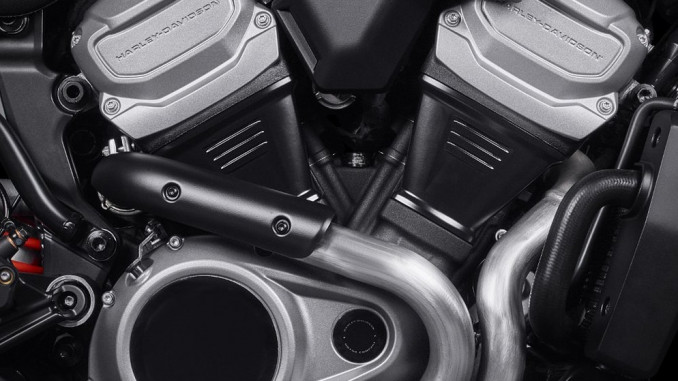
It’s not very often we see The Motor Company introduce a completely new engine, so our ears pricked up when we learned the new Bronx, Pan America and as-yet-unnamed ‘flat tracker’ 2021 Muscle bike will feature the ‘all-new’ Revolution Max engine.
While Harley bills the engine as ‘all-new’, it can be surmised that many engineering cues came from the earlier Revolution engine we first saw in the V-Rod nearly 20 years ago. You’ll recall this liquid-cooled DOHC four-valve 60-degree V-Twin was developed in partnership with Porsche Engineering and was a significant design departure for Harley-Davidson but nevertheless went on to garner a substantial cult following. The V-Rod was quietly dropped from the H-D model line-up at the time of the Milwaukee-Eight and new Softail chassis introduction in 2017.
The engine is designed to fill the middleweight sector currently satisfied by the 45-degree, V-Twin Evolution engine (aka ‘Evo’) featured in the Sportsters since 1986.
The Revolution Max will initially be available in 975cc and 1250cc displacements and will be integrated into the motorcycle as a stressed member, enhancing centre of gravity and improving handling. While this, on its own, is not so ‘revolutionary’ but some other features will certainly raise the eyebrows of Harley diehards.
The Revolution Max will be liquid cooled. Apart from entry-level Streets (500 and 750cc), all other current Harley-Davidson V-Twins are air-cooled, following Milwaukee’s long-standing tradition. The reasoning is that liquid cooling maintains a consistent engine temperature that, in turn, provides more predictable performance across variations in environment and riding conditions.
The other visual cue is that the V will be a 60-degree angle instead of the signature 45-degree. The reasoning for this design departure is to allow room for dual downdraft throttle bodies for maximum airflow and increased performance from the 8-valve architecture.


Curiously, there is no mention of camshaft format in any official documentation, but the engine is widely described as ‘DOHC’ elsewhere. Otherwise, The Motor Company is tight-lipped about new model development.*
Leaked design drawings allegedly from a recent investor presentation appear to show the Revolution Max engine with pushrods and a single rocker for each pair of inlet and exhaust valves, joined by a ‘bridge”. Which begs the question: if this is not the Revolution Max, then is it yet another engine on the drawing board?
Official sources also give power and torque data with the 1250cc version producing and most respectable 145hp (108kW) of power and 88Nm of torque – and with internal balancers, the engine can be expected to run smoother with substantially reduced vibration for enhanced rider comfort, a common criticism for current Sportsters.
All going to plan, we should see the first Revolution Max powered models appear in late 2020 or more likely early 2021 given COVID-19 production delays.
* Harley-Davidson was contacted for clarification but chose not to comment



